
| 
|

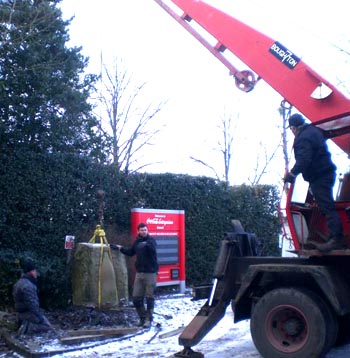
Friends Newsletter No. 35
January 2011
Who are the Friends? Friends promote research, conservation and celebration of the Springs, Spouts, Fountains and Holy Wells of the Malvern Hills and of Great Malvern as a
Coca Cola Enterprises and Friends of Malvern Springs and Wells join forces to save threatened Stone Bottle Fountain
It was a freezing cold winter day, minus 2 degrees, at the beginning of December, when a specialist team arrived in snow clad Colwall. Following submission of risk assessment and methods statements, security clearance and ensuring the water was turned off; it took three men and a large crane several hours to carefully complete the exercise. As the crane began its initial lift the fountain refused to budge, much to everyone's surprise and consternation. Massive crowbars and huge metal wedges were required to loosen the concrete seal round the fountain's base. Cora and Bruce watched with trepidation as the massive stone artefact eventually swung into the air, raising a cheer from all involved.
We are pleased to report that the fountain was successfully removed and is now in storage at a secret location. The plan is either to return it to its original position if, in the future, the site is appropriate for such a unique artefact. Alternatively we hope to identify a suitable alternative site around the hills. In this way it will become a revered and lasting visible treasure of Malvern's spring water bottling history. If you have a good idea as to where it might be relocated, do let us know. It needs to be somewhere that has public access, a water supply and can be cared for, for example a public park.
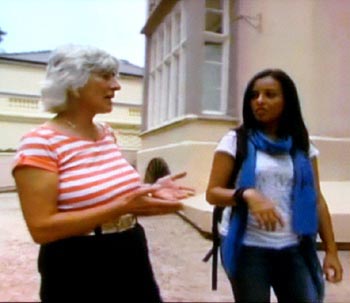 Our thanks to all involved for helping to complete the first half of the programme successfully.
Our thanks to all involved for helping to complete the first half of the programme successfully.
Cora is on location again, this time outside Dr Gully's Holyrood House. This was one of the principle hydrotherapy locations in the 19th century using Malvern spring waters for the cure. Here Cora is talking about the Malvern Water Cure and Florence Nightingale on Country Tracks, screened on BBC1 on the 31 October.
In the last newsletter a Friend queried why the Civic Society chose to put a Nightingale plaque on Malvernbury rather than the more notable and surviving Holyrood House. Another Friend, who is active with the Civic Society, replied stating that the Society is seeking to put plaques on many key buildings but has to carefully select the famous person. In the case of Malvernbury, Florence Nightingale is the only famous person that we know who stayed there, albeit the original house has now gone. Holyrood House had other famous people staying there and so the choice of who to commemorate is wider. The Civic Society decision ensures that the Malvernbury site has a plaque and that as wide a range of famous names as possible are encompassed in the scheme. I guess that all makes sense and so we look forward to the intended Blue Plaque Trail in and around the town. As
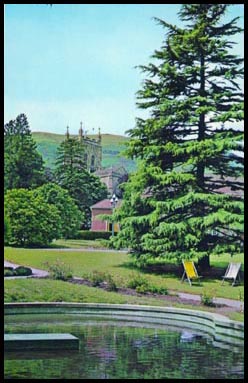
We were recently sent this postcard of
For more information go to www.malvernspringsandwells.com
Malvern Museum deluged in Malvern Water
This is probably your last chance to purchase a bottle of Malvern Water from the former factory at Colwall. We have arranged, in conjunction with Coca Cola Enterprises, for
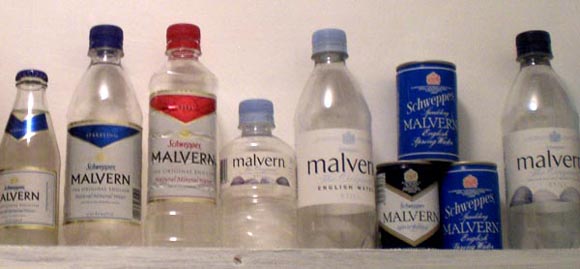
Picture above - Mementos of the past kept for posterity.
Misleading Slip-ups - THE BIG OOOOOOOOooooopps! - WHERE WE SPOT THE  BANANA SKIN SLIP-UPS We often see misleading information, some is deliberate and some is unintentional. Even we drop the odd clanger. What ever the reason, good or bad, there is no real alternative to the truth, properly presented. With this award we seek to set the record straight about banana skins in a National Park.
BANANA SKIN SLIP-UPS We often see misleading information, some is deliberate and some is unintentional. Even we drop the odd clanger. What ever the reason, good or bad, there is no real alternative to the truth, properly presented. With this award we seek to set the record straight about banana skins in a National Park.
In the last newsletter we considered a Malvern Springs and Hills National Park. A Friend commented as follows: 'In answer to your invitation to comment, I don't see why Malvern should not officially be named a National Park and would support it becoming one, unless there were any disadvantages that I haven't yet read about.
The last National Park that I visited was the Brecon Beacons on my walking holiday in September with a walking holiday company. I noticed a woman throw a banana skin into the ditch by a stream on one walk and asked her if it is OK to do that, would it decompose and add to the land (if so, that's the kind of thing I would do). She said it was OK. On a walk later in the week, I therefore happily tossed my banana skin into the base of bush and suddenly saw the walk leader march over to me, looking annoyed. 'I'll pretend I didn't see that,' he glared at me in a teacher-like fashion, 'this is a National Park, you know, and you are not meant to do that!' I humbly explained my reason for having thrown it down and promised not to do it again, as naturally if it took as many centuries as he suggested for the banana to break down, it would be an unwanted blight and eyesore on the landscape that I was causing...'
Historic Artefacts are there awaiting discovery
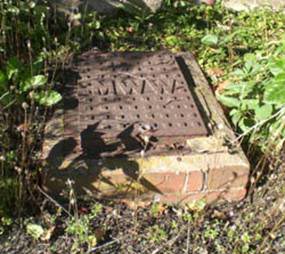 subsequently become actively involved in this interesting subject. Our forthcoming book 'Celebrated Springs of the
subsequently become actively involved in this interesting subject. Our forthcoming book 'Celebrated Springs of the
In the picture - while conducting field work at Poolbrook we noticed this cast iron artefact - marked MWW - Malvern Water Works. This dates it to the late 19th century or thereabouts.
Urgent Request - we need an early Burrows Blue Soda Siphon to photograph. Do you know where there is such an historic artefact? If so please get in touch.
Progress with Dr Jacob's Fountain.
It was a year ago in Newsletter 29 that we raised the plight of Dr Jacob's Fountain at the Malvern Theatres. This was quickly followed up by a letter in the Gazette by retired G.P. Dr John Harcup and former Malvern Hills Conservators' Chairman Ray Roberts who had taken up the cause. Pleased that our appeal had alerted such revered members of the Malvern Spa Association we pledged our support and have endeavoured to keep abreast of developments. Having contacted them recently we are only able to report no apparent action, which is most disappointing.
Life without Water
This recent cold spell has alerted us all to the importance of reliable, frost free, water supplies. Recent weeks have been filled with stories of homes without water due to frozen stop cocks and pipes. We have experienced both in the last few days and although quickly resolved, it does highlight how much we rely on water at the turn of a tap. In our case we had to find an external tap on another house and having thawed it out, we then carted our domestic water back to the kitchen in buckets. This is fine for a cup of tea, but baths and central heating are out the question.
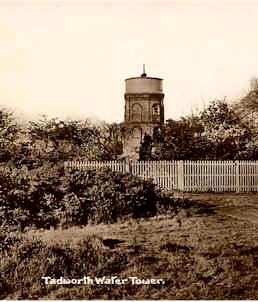
Living in a former water tower, it was with some surprise that Bruce discovered a well in his front garden in the year 2000. Investigation suggested that it was 180 feet deep or thereabouts based on other wells in the vicinity. Why dig a well when you are also building a water tower? The answer is of course that you need the water to mix the mortar to build the tower. The tower then supplies the neighbourhood, having filled the tank with water pumped up from springs elsewhere. This in turn enables building development to proliferate once the piped water is available. The community grows and people live happily ever after. This chain reaction creates the situation that we inherit today, one of interdependency on infrastructure. When the system fails the infrastructure is worthless.
Water towers are now becoming redundant. Once they proliferated in the 19th and early 20th century landscape, but pump technology is making it unnecessary to maintain such lofty and expensive structures. As a result they are now being redeployed. Colley Hill tower on the
Email: springs@thespas.co.uk (click here to send an email)
Website: Click Here
SUPPLEMENTARY INFORMATION
 Newsletter Archive which can also be accessed from our WEB SITE INDEX.
Newsletter Archive which can also be accessed from our WEB SITE INDEX.
Friendship - There is no charge made for joining Friends of Malvern Springs and Wells. Just let us have your email address and we will send our newsletters, which are usually two monthly. Please be aware that some email addresses block large circulation emails. Do feel free to participate in our activities by contacting us below.
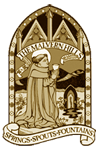
Best wishes, Cora & Bruce
Tel. 01737 213169 email bruce@thespas.co.uk
Tel. 01684 561215 email cora@malvernspa.com
1) TOPOGRAPHICAL LOCATION:
Malvern Hills - arguably Britain's original National Park
3) INFORMATION CATEGORY:
A Spring, Spout, Fountain or Holy Well SiteSprings and Wells General Interest
Friends Newsletter


